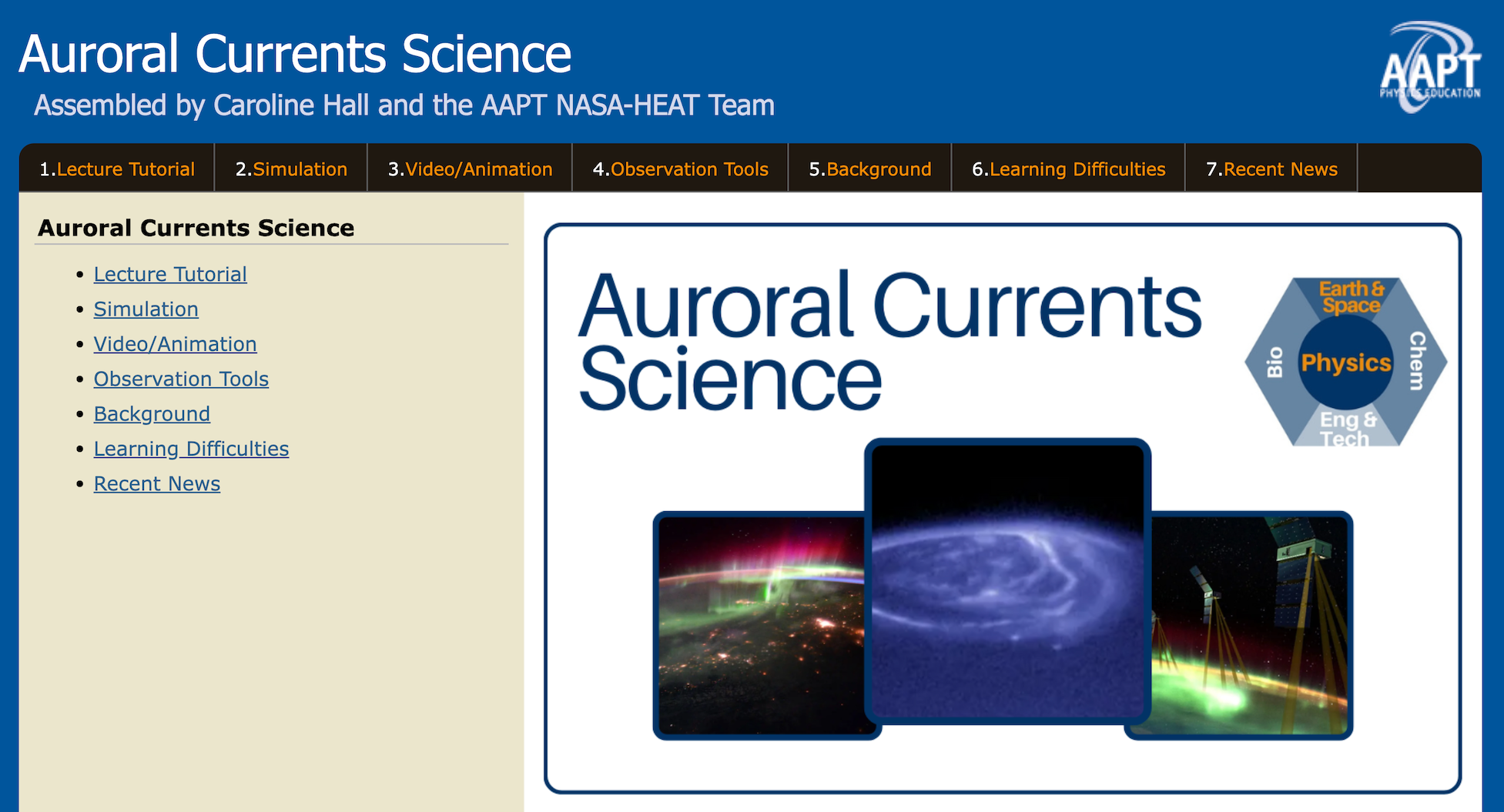New Educational Resource: Exploring Auroral Currents through AAPT’s Latest DigiKit
In an exciting development for educators and students alike, the American Association of Physics Teachers (AAPT) has released a new educational resource titled "Auroral Currents Science." This latest addition to their DigiKit series is designed specifically for teachers of advanced high school students and university majors in physics and astronomy. The DigiKit aims to enrich the learning experience by providing high-quality, accessible digital content that simplifies complex scientific concepts.
Developed under the careful guidance of Caroline Hall, a digital content specialist, the Auroral Currents DigiKit is a valuable tool for educators. Caroline Hall has meticulously curated the materials, ensuring that the content is not only accurate but also easily accessible. Her efforts are directed toward sourcing open digital resources that maintain a high standard of quality, making them ideal for educational purposes.
Understanding Auroral Currents
The central focus of this DigiKit is a lecture tutorial that delves into the fascinating world of auroral currents. These currents are the driving force behind the awe-inspiring auroral displays that light up the sky, often referred to as the Northern or Southern Lights. These natural phenomena have captivated human imagination for centuries, and understanding the science behind them can enhance our appreciation of their beauty.
At the core of these light shows are magnetic fields produced by current-carrying wires. The Auroral Currents DigiKit provides students with an opportunity to explore and extend their understanding of these magnetic fields. By engaging with the tutorial, students can learn how these fields relate to the auroral currents themselves.
What Makes This DigiKit Special?
The Auroral Currents DigiKit stands out due to its comprehensive approach to teaching. It doesn’t just stop at explaining the basics but encourages students to delve deeper into the subject matter. The materials included in the DigiKit are designed to be interactive, promoting active learning. This method helps students to better retain the information and apply it in real-world situations.
Moreover, the DigiKit is built on a foundation of open resources. This means that educators can freely access and utilize the materials without worrying about licensing issues. This approach not only broadens the reach of the content but also ensures that a wider audience can benefit from these educational tools.
A Closer Look at Magnetic Fields and Auroral Currents
To appreciate the significance of the Auroral Currents DigiKit, it’s essential to understand the relationship between magnetic fields and auroral currents. Magnetic fields are invisible forces that can exert a force on electric currents and magnetic materials. They are produced by moving electric charges, such as those found in current-carrying wires.
Auroral currents, specifically, are electric currents that flow along magnetic field lines in the Earth’s magnetosphere. They are responsible for the charged particles that collide with the Earth’s atmosphere, creating the stunning light displays known as auroras. The DigiKit provides a detailed exploration of these processes, helping students link theoretical knowledge with observable phenomena.
Enhancing Classroom Learning
For educators, integrating this DigiKit into their curriculum can significantly enhance the learning experience. It offers a structured yet flexible framework that can be adapted to different teaching styles and classroom settings. Teachers can use the materials as a standalone unit or incorporate them into broader lessons on electromagnetism and atmospheric science.
The interactive nature of the DigiKit encourages student participation, fostering a more engaging and dynamic classroom environment. By working through the tutorial, students can develop a deeper understanding of the underlying principles governing magnetic fields and auroral currents. This hands-on approach not only reinforces theoretical knowledge but also develops critical thinking and problem-solving skills.
Good to Know: The Science Behind the Auroras
Understanding auroras involves a fascinating journey into Earth’s magnetosphere. The auroras are primarily caused by solar wind – streams of charged particles emitted by the sun. When these particles reach Earth, they interact with the planet’s magnetic field, producing electric currents. As these currents travel along the magnetic field lines and enter the atmosphere near the poles, they collide with gas molecules, releasing energy in the form of light.
This process results in the mesmerizing auroral displays, which can appear as shimmering curtains, arcs, or spirals of green, red, yellow, or violet light. Each color is produced by different types of gas molecules at varying altitudes. The study of auroras not only adds to our understanding of atmospheric sciences but also provides insights into space weather and its potential impacts on Earth.
Broader Implications and Reactions
The release of the Auroral Currents DigiKit has been met with enthusiasm from the educational community. Teachers appreciate the access to high-quality materials that can be seamlessly integrated into their existing lesson plans. Students benefit from the engaging content that makes complex scientific principles more approachable.
The positive reception of this DigiKit underscores the importance of accessible educational resources in fostering a deeper understanding of science. By making complex topics more understandable, resources like this DigiKit can inspire the next generation of scientists and innovators.
Conclusion
AAPT’s Auroral Currents DigiKit is a testament to the power of open educational resources. It provides educators with the tools they need to effectively teach complex scientific concepts while engaging students in active learning. By exploring the fascinating science behind auroral currents, students can gain a better understanding of the natural world and the forces that shape it.
For more information on the Auroral Currents DigiKit and to access the materials, you can visit AAPT’s official website here. This resource promises to be a valuable addition to any science educator’s toolkit, providing a rich educational experience that bridges the gap between theoretical knowledge and real-world applications.
For more Information, Refer to this article.
































